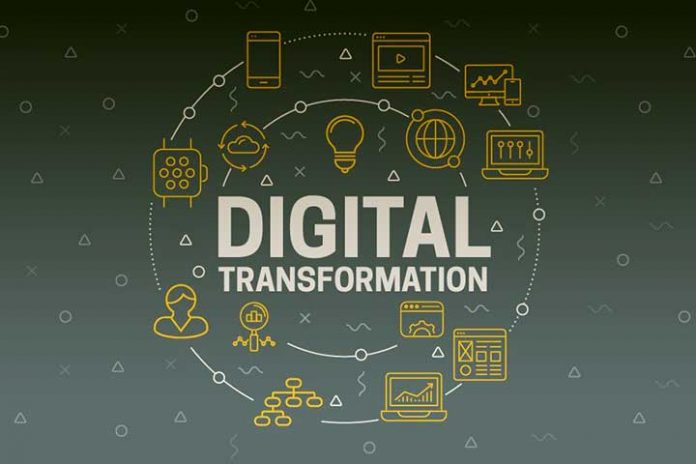Contents
Go digital? Yes, but how? We accept the challenge of answering this question, framed in the digital transformation process of companies.
Digital transformation in companies from another point of view
In this chapter, we talk about how you can face digitization from another point of view. We heard first-hand some of the keys that the process entails:
- Observation
- Commitment to the activity
- Desire to improve
- Wanting to provide colleagues (and oneself) with a practical and disruptive solution
How did you carry out your idea of digital transformation in companies?
How did you put your hospital ‘in your pocket’?
It all started with the proliferation of apps and also observing that colleagues had to go through several processes that were repeated over and over again. This pattern consisted of a series of consultations to be carried out before visiting a patient, in addition to subsequent updates.
Most of the time, in the middle of the consultation, the need arose to check more information and carry out small administrative tasks. Or there were interruptions and emergencies… It’s usually in a hospital, where no two days are the same.
In short, all this took up a lot of time for the professional. He had to consult the screens and systems or speak with other specialists to find out what diet the patient was following, what was being administered or the result of a test, for example.
So, it occurred to me that these consultations could be done directly in a single window to save time and not complicate the doctor’s daily work.
Why mobile phones?
I realized that most people carry (and need) a mobile device. I thought it would be a good solution if the telephones could accompany the professionals in each visit, round or daily chores and avoid the need to consult several systems. They could carry them in their pocket (unlike a tablet, for example) without being bothered to work.
The goal was for them to have the information at their fingertips, eliminating efforts because we were used to dealing with large and heavy systems. Mobile phones were part of the challenge, too, so we started with something simple: develop an app that would say “Hello” when you click on it. The innovation was not much.
How did you start to see and define the scope of the project?
Viewing, reviewing and verifying the processes that were done daily. A hospital like ours never stops; we have many procedures, from the usual ones to those that are not so, although they do not stop being important.
In addition, we handle a large amount of information generated at different points. Our professionals must consult it and complement it with new data. We bet on a mobile application because it works on any operating system.
We already had the means, the scope and the purpose. Then, the experience in its development made us move forward with caution, which allowed us to close issues little by little and not have the project open frontally. Because if we couldn’t pull it all off, it would be a huge failure.
By phases and areas, we included the management tools that our professionals needed within the app, with them asking us for more. Thus we avoid the rejection of change. This has been an innovation within the usual digital transformation process in companies.
In addition, the support of the management and the medical director was also essential for the project.
What benefits did this innovation bring?
The objective of this application is to have updated information in real-time at a single point, and we have achieved that. Those who use it can incorporate new data, see patients’ medication, change a diet or give medical orders.
It can be used anytime, anywhere, safe knowing that medical data is protected. For example, when consulted outside our facilities, the application does not give the full names of people (only initials).
In our hospital, it is connected by Wi-Fi to a powerful central computer, which is the one that processes the information, validates it and stores it safely.
With this digital solution, users can gain productivity and have more time than they can dedicate to improving the quality of care for our patients so that they are more protected and cared for. This helps improve trust and the doctor-patient relationship.
What degree of acceptance did the app have?
We did not want anyone to feel that the app was an obstacle to their activity or that it was not useful. That’s why we always consult before adding a new feature. Much of our success lies in this collaboration and initial analysis.
The app was very well received. Still today, professionals ask us for new features, which we study and implement if they meet quality and safety standards. We have managed to be pioneers in this digitization ‘with a head,’ and we are very proud.
We have even ended up teaching the application to other hospital centres due to its generated interest. In addition, people from other countries have met her: from Colombia, the Philippines…
Do you think that this simple methodology is the most appropriate?
The important thing is to analyze if your sector needs such a solution. There will be others that will be fantastic. We detect a problem and focus on solving it with this technology. We must focus, close points, plan… And we must also adapt to the resources and capabilities we have.
On the other hand, you have to be an entrepreneur, even within a Company. Everything that can be contributed to improving competitiveness is important. It is unnecessary to be an entrepreneur and create your own business to start an idea.
What will be the next phase of your digitization?
Today there is talk of telediagnosis by imaging, Big Data, the metaverse, and robotics applied to medicine… For the time being, we want to eliminate as much paper as possible from our hospital to continue with the digitization process. And also to continue working on our commitment to the environment.
We have very up-to-date information from this new interface, but when making decisions, we don’t need all the details. Instead, we require a single source of truth that all departments share. So, among several projects we have underway, we will focus on Business Intelligence (BI).


